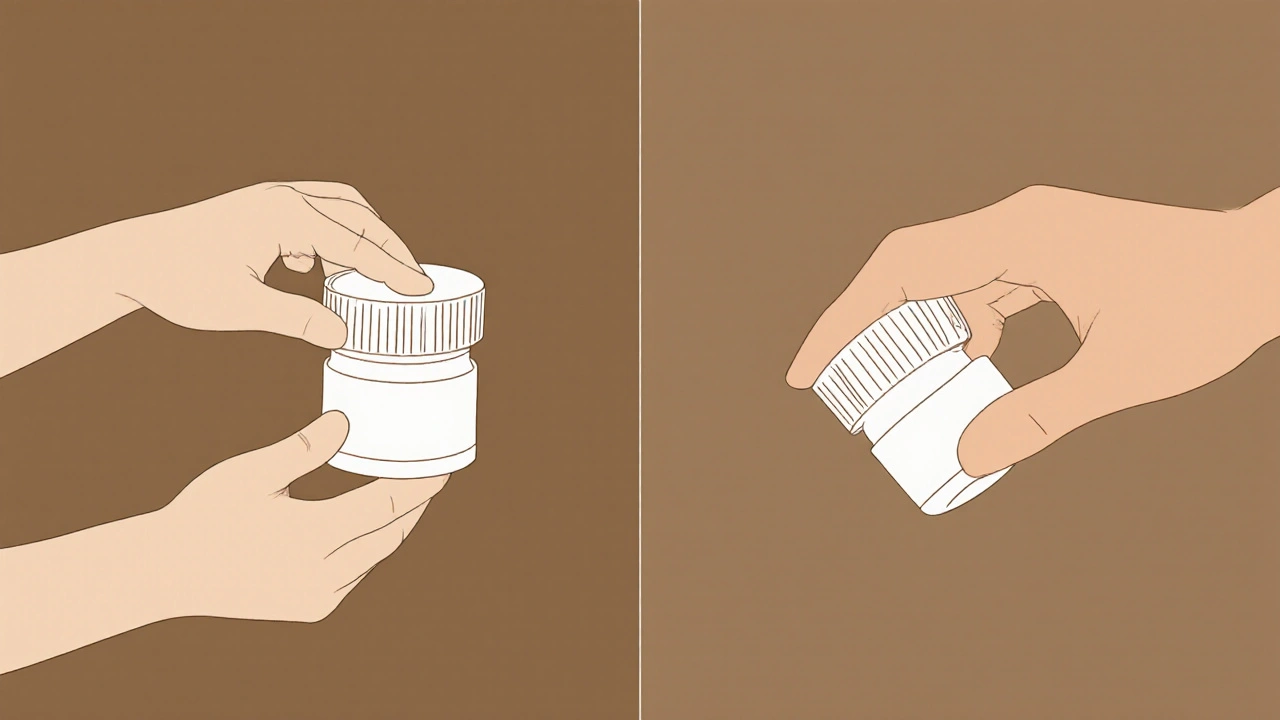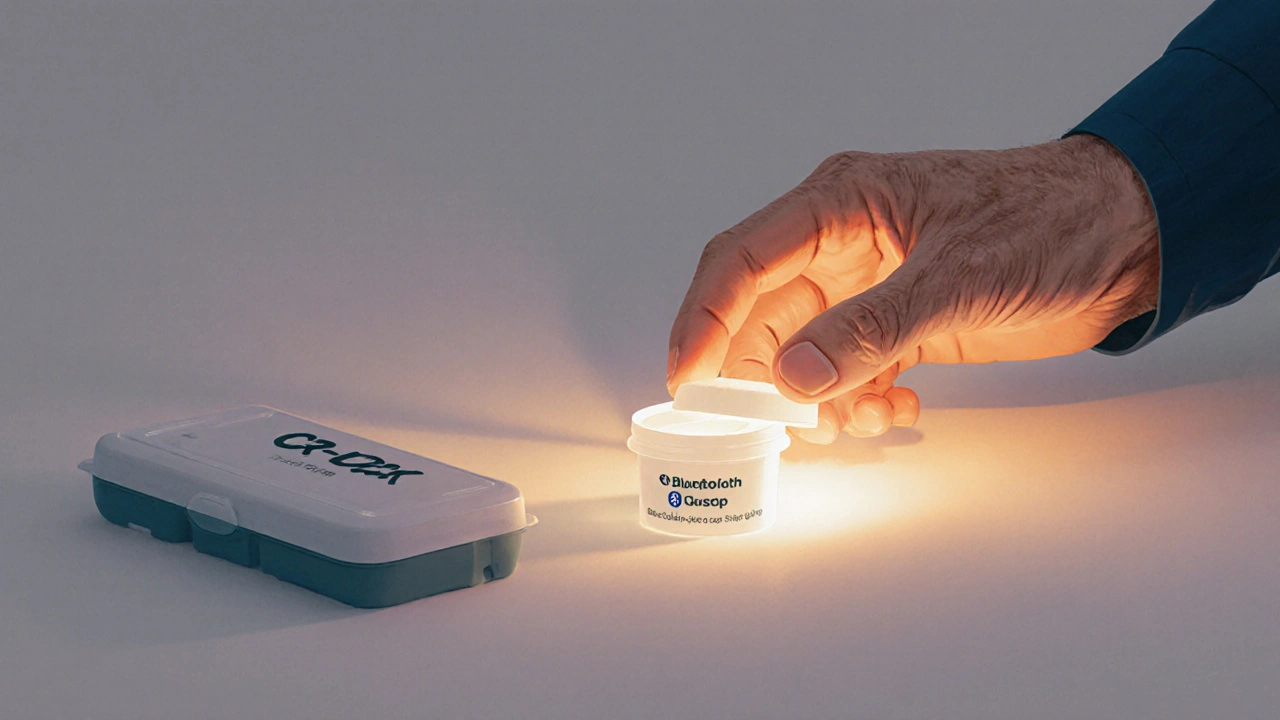Every year, thousands of young children accidentally swallow medicines meant for adults. Some of these cases end in emergency rooms. Others end in tragedy. The good news? Child-resistant packaging has cut those numbers by nearly half since the 1970s. But it’s not perfect. And if you’re a parent, grandparent, or caregiver, you need to know exactly how it works - and where it falls short.
What Exactly Is Child-Resistant Packaging?
Child-resistant packaging, or CR packaging, isn’t meant to be child-proof. That’s a common mistake. No container can guarantee a curious toddler won’t get into it. What CR packaging does is make it hard enough - and slow enough - that most kids under five can’t open it in a few minutes. The U.S. government set the standard in 1970 with the Poison Prevention Packaging Act. Since then, it’s saved an estimated 900,000 children from accidental poisoning.The rules are strict. To pass, a packaging design must block at least 85% of children aged 42 to 51 months from opening it within 10 minutes. Then, those same kids are shown how to open it - and still, at least 80% must fail to open it again in the next 5 minutes. That’s not luck. It’s engineering.
How Do These Caps Actually Work?
You’ve seen them. The kind you have to push down and twist at the same time. Or squeeze the sides while turning. These aren’t random designs. They’re built around what kids can’t do yet.Most CR caps use one of three mechanisms:
- Push-and-turn: Requires pressing down firmly while rotating the cap. Toddlers can’t coordinate the two motions at once.
- Squeeze-and-turn: You have to compress the sides of the cap while twisting. Small hands lack the grip strength.
- Interlocking tabs: Two separate parts must be moved simultaneously - like sliding a latch while lifting.
These designs are tested with real kids and real seniors. Why seniors? Because if grandma can’t open it, the design fails. The rules say at least 90% of adults aged 50-70 must open and re-close the container within five minutes. That’s the balance: safety for kids, usability for adults.
Not All Medicines Are Created Equal
You might assume all pills and liquids come in CR packaging. But that’s not true. The rules depend on the drug, the dose, and how it’s given.For example:
- Tablets and capsules: Nearly all prescription and many OTC versions use CR caps. Compliance is over 97%.
- Liquid medications: These are the biggest problem. About 39% of non-compliant packaging cases involve liquids. Why? Spill risks make some manufacturers skip CR caps, or use flimsy designs.
- Nasal sprays: These are the toughest. The CPSC says the pump itself isn’t enough. You need a child-resistant overcap. Only 22% of nasal spray products meet the standard without special modifications.
- Blister packs: Standard blister packs don’t count. But if the foil requires 15 pounds of force to peel, it can qualify. Some brands now make blister packs with raised tabs you have to press down to pop out the pill - that’s CR.
Even more specific: any product with 0.08 milligrams or more of imidazoline (found in some decongestants) must have CR packaging. Same goes for all Schedule II-V controlled substances - no exceptions.

Why Do So Many Kids Still Get Into Medicines?
You’d think CR caps would solve the problem. But they don’t. In 2022, over 12,800 incidents were reported where children accessed medications despite CR packaging. The main reasons?- Improper reclosing: 73% of cases. Parents open the bottle, give the medicine, then just snap the cap back on without pushing and twisting properly. The seal looks closed - but it’s not locked.
- Container damage: 18.5%. Cracked caps, broken threads, or worn-out seals let kids get in.
- Wrong storage: Leaving meds on the counter, in a purse, or in a drawer kids can reach.
And here’s the kicker: CR effectiveness drops about 15% after the first opening. That’s because people don’t re-close them right. A study by the CPSC found that CVS Health’s CR caps failed child resistance tests 22% of the time - while manufacturer-specific designs failed only 8% of the time. Brand matters.
Seniors and People with Arthritis Are Struggling Too
CR packaging was designed for kids. But it’s often too hard for older adults. A 2022 survey by the Arthritis Foundation found that 68% of people with hand pain or arthritis couldn’t open standard CR caps without help. The average force needed? More than 5 pounds - the recommended maximum for senior-friendly designs.Some people resort to leaving caps off. Others store meds in pill organizers that aren’t CR. That’s dangerous. But newer designs are helping. Brands like Blisterpak’s Easy-Open system get 4.2 out of 5 stars on Amazon, with users saying, “Finally, a cap my 70-year-old mother can open without assistance.”
Companies are responding. Over 60% of new CR packaging patents filed between 2018 and 2023 include senior-friendly features - like larger grips, reduced torque, or one-handed operation.
What’s New in 2025?
The tech is getting smarter. In January 2023, Aptar Pharma launched the first FDA-cleared connected CR cap: SmartDose. It looks like a regular cap, but inside is a Bluetooth chip that logs every time someone opens it - and sends a notification to a caregiver’s phone if it’s opened at 3 a.m. by a child. Accuracy? 99.2%.Regulations are expanding too. In 2023, the CPSC proposed new rules requiring CR packaging for all THC edibles with more than 2mg per serving. Laundry detergent pods are next on the list - currently only under voluntary standards, but that could change soon.
Global adoption is rising. Brazil and India made CR packaging mandatory for all medications in 2021 and 2022. The EU follows ISO 8317 standards, which are similar but not identical to U.S. rules. The global market for CR packaging is projected to hit $4.87 billion by 2028.

What You Can Do Right Now
CR packaging is a tool - not a solution. Here’s how to use it right:- Always re-close properly. Push down and twist until you hear or feel a click. Don’t just snap it shut.
- Store meds out of sight and reach. High cabinets, locked drawers, or even a high shelf in the bathroom. Never on the counter, nightstand, or in a purse.
- Check expiration dates. Old caps crack. Worn threads don’t lock.
- Ask for senior-friendly alternatives. If you or someone you care for struggles to open caps, ask your pharmacist for non-CR packaging. They can provide it - but you must sign a form acknowledging the risk.
- Never rely on CR alone. Supervise kids. Use locks. Educate older siblings. CR packaging is the first line of defense - not the only one.
What If You Can’t Open the Cap?
If you’re struggling to open a CR cap:- Try using a rubber grip pad or a jar opener.
- Ask your pharmacist for a non-CR version - they’re legally required to provide it if you sign a risk acknowledgment.
- Switch to a pill organizer with a child-resistant lock (like the MedMinder or Hero device).
- Don’t force it. A broken cap is a hazard.
Remember: CR packaging is there to buy you time - not to be foolproof. The real safety comes from combining smart packaging with smart habits.
Are child-resistant caps the same as child-proof?
No. Child-resistant means the cap makes it hard for young children to open - not impossible. No packaging can guarantee a child won’t get in. The term "child-proof" is misleading and not used by regulators. Always assume the cap can be opened if a child is determined and has time.
Can I ask my pharmacist for easier-to-open caps?
Yes. Under federal law (16 CFR 1700.15), pharmacists must provide non-child-resistant packaging if requested by the patient or caregiver. You’ll need to sign a form acknowledging the increased risk, but it’s your right. This is especially helpful for seniors with arthritis or anyone with limited hand strength.
Why do some medicine bottles still not have child-resistant caps?
Some medications aren’t required to have CR packaging. This includes certain OTC drugs with low-dose ingredients, topical creams, and some liquid suspensions where CR caps could interfere with accurate dosing. Also, if a patient requests non-CR packaging, the pharmacy can provide it with proper documentation. Always check the label - if it says "child-resistant," it meets federal standards. If not, assume it’s not protected.
Do CR caps work on all types of medicine?
Not equally. Solid pills and capsules have the highest compliance rates - over 97%. Liquids and nasal sprays are harder to secure. Nasal spray pumps, for example, require special CR overcaps because the pump itself isn’t enough. Blister packs only qualify if the foil requires 15 pounds of force to peel. Always check the packaging label to see if it meets CPSC standards.
What should I do if my child opens a CR container?
If you suspect your child has taken any medication - even a single pill - call Poison Control immediately at 1-800-222-1222 (U.S.) or your local emergency number. Don’t wait for symptoms. Keep the container handy - the label has important info for medical staff. Even if nothing seems wrong, some medications cause delayed reactions. Better safe than sorry.

Melanie Taylor
November 16, 2025 AT 14:44